Physical Address
304 North Cardinal St.
Dorchester Center, MA 02124
Physical Address
304 North Cardinal St.
Dorchester Center, MA 02124
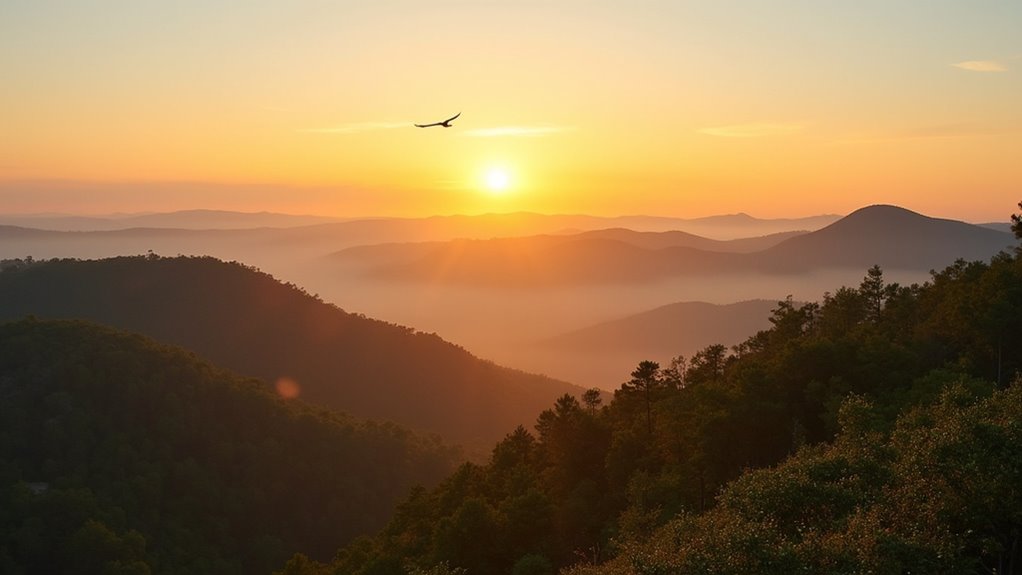
Adventure awaits just beyond Florida's famous flatlands where surprising peaks offer breathtaking views and unexpected hiking thrills.
When you think of Florida, you picture pristine beaches, not soaring peaks. With its highest natural point reaching just 345 feet above sea level at Britton Hill, the Sunshine State isn’t exactly a mountaineer’s paradise. Yet Florida’s unique topography offers surprising elevations worth exploring, while nearby states host impressive mountains within driving distance. You’ll find these “mountains” provide invigorating alternatives to Florida’s flatlands, offering panoramic vistas and ecological diversity you wouldn’t expect so close to home.
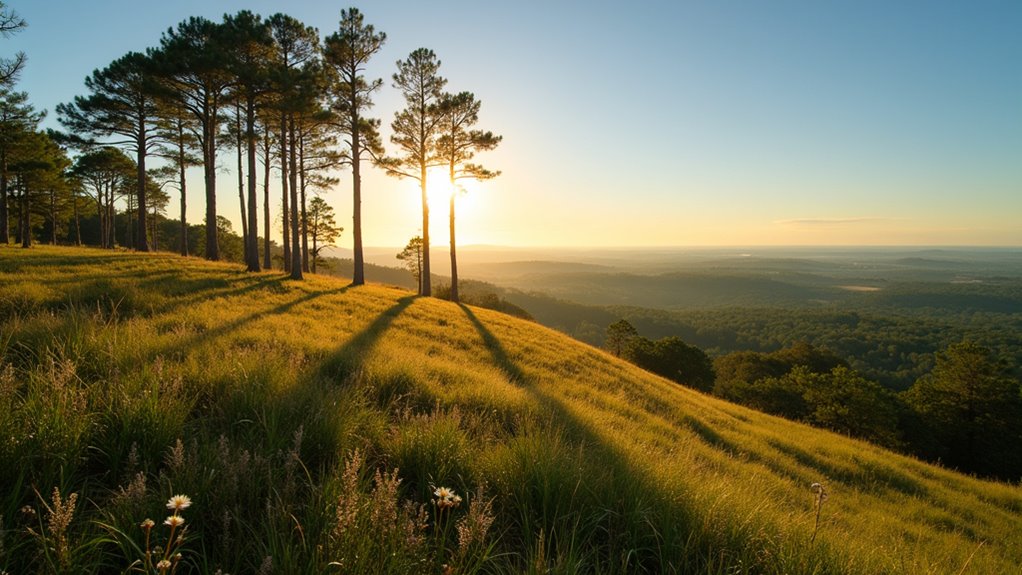
When most people think of mountains, Florida rarely comes to mind, yet the state does claim one notable high point. Britton Hill stands at a modest 345 feet above sea level, making it the lowest state highpoint in America.
You’ll find this geological curiosity in Walton County, just 2 miles southeast of the Alabama border. Unlike challenging peaks that require technical climbing skills, Britton Hill offers a convenient 0.1-mile paved walkway from the parking area. The hill is situated near County Road 285 in northern Walton County, making it easily accessible for visitors.
Despite its humble stature—lower than many Florida skyscrapers—Britton Hill attracts both casual visitors and serious “50-state highpointers” completing their quest. The site features informational signage and trails within Lakewood Park‘s forested setting, providing year-round access for families and outdoor enthusiasts alike. Visitors should still maintain safety awareness while exploring, just as they would at other Florida attractions.
Just a short drive from Britton Hill stands Falling Waters Hill, Florida’s second-highest natural feature at 318 feet above sea level. Located in Washington County, this modest summit rises 160 feet from its base, offering charming views of northern Florida’s countryside.
You won’t find dramatic cliffs or rocky terrain here—just gentle slopes covered with pines and hardwoods typical of the region. The hill’s sandy soil supports diverse local flora and fauna, making it a good spot for wildlife viewing and photography. The area is home to the state’s highest waterfall, a stunning 73-foot drop where water cascades into a cylindrical sink approximately 100 feet deep and 20 feet wide. While not as dramatic as the El Yunque rainforest in Puerto Rico, Falling Waters still offers visitors a unique Florida natural experience.
While not a hiking destination like mountains elsewhere, Falling Waters Hill provides a pleasant backdrop for casual walks and birdwatching. The humid subtropical climate creates varying conditions throughout the seasons, with summer thunderstorms occasionally rolling through this unassuming but ecologically important highland gem.
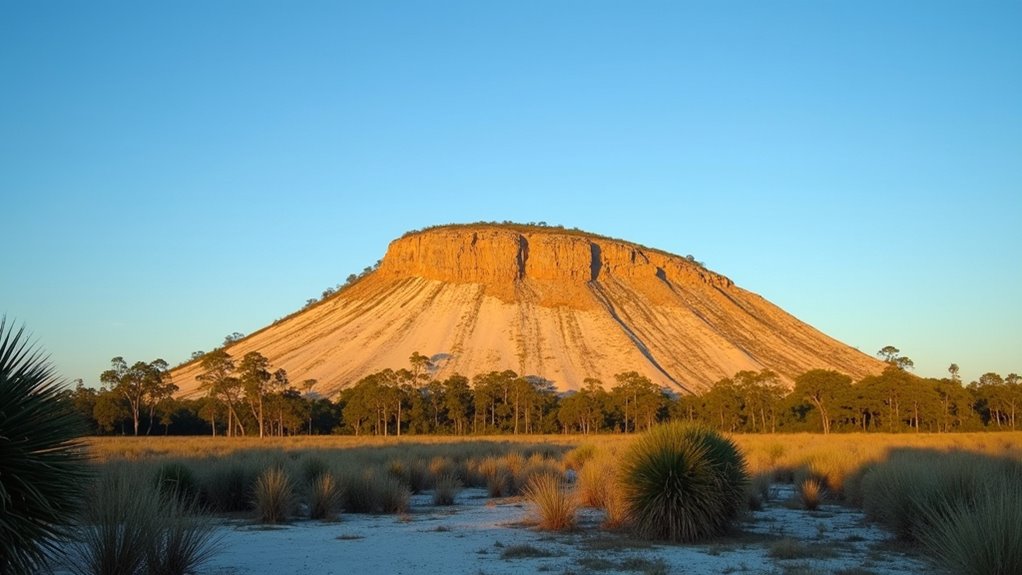
Heading south from Florida’s northern highlands, you’ll encounter Sugarloaf Mountain in Lake County, a geological marvel that dominates the surrounding landscape. At 312 feet above sea level with a prominence of 245 feet, it’s Florida’s most prominent point, rising abruptly from the flat terrain near Clermont.
This 20-million-year-old formation isn’t a traditional mountain but an ancient sand dune and uplifted coastline along the Lake Wales Ridge.
From its summit, you’ll enjoy panoramic views of Lake Apopka and beyond.
You can access Sugarloaf via road or hiking trails, making it popular for outdoor enthusiasts. Just as visitors planning trips to New Orleans should prioritize safety awareness, those exploring Sugarloaf should come prepared with proper hiking gear and water. The area once thrived with citrus plantations until devastating freezes in the 1980s transformed land use toward residential development.
While not Florida’s highest point overall, this geological oddity offers a rare elevated perspective in an otherwise flat state.
Tucked away in the ancient Lake Wales Ridge system, Camp Lake South stands as Florida’s third-highest natural point at an impressive 310 feet above sea level. This geological marvel formed from ancient sand dunes during the Pliocene-Pleistocene era when sea levels were much higher.
You’ll find this elevation affects local watersheds while its sandy soils rapidly recharge the aquifer below. The ridge represents one of Florida’s most ecologically significant features:
Though partially altered by citrus industry development, conservation efforts continue to protect this unique ecosystem. This area is part of central Florida’s peninsula, where the Lake Wales Ridge runs through hosting the highest elevations in peninsular Florida. Venturing to Camp Lake South offers a stark contrast to the epic road trips that traverse the more dramatic mountain landscapes of the West Coast.
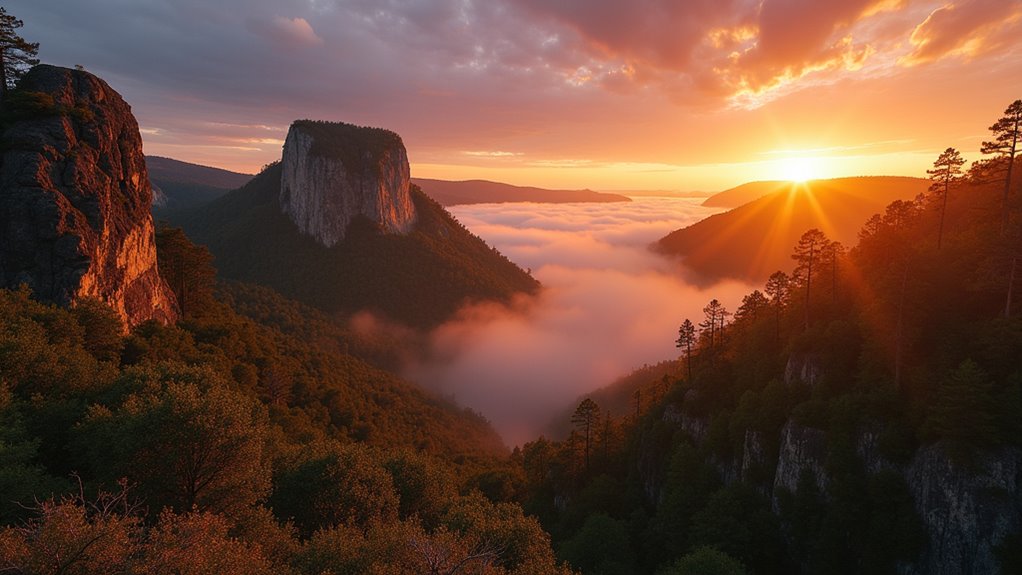
Situated in Holmes County’s Prosperity Area, Jackson Hill rises an impressive 233 feet above sea level, making it one of northern Florida’s distinctive geological features. You’ll find this geological uplift at coordinates 30.8440744°N, -85.9407694°W, where it stands about 60 feet higher than the surrounding landscape.
While exploring Jackson Hill, you’ll encounter the region’s characteristic subtropical climate and mixed hardwood-pine forests that support diverse wildlife. The area offers hiking opportunities through terrain that contrasts with Florida’s typically flat topography. Travelers seeking a change from major city destinations might appreciate the natural tranquility this area provides.
This hill connects to the region’s opulent history, where Native American communities once lived and early agricultural settlements developed. Though it lacks extensive tourism infrastructure, Jackson Hill remains significant for local conservation efforts and as a natural landmark in the USGS Prosperity Map Area. With only 1 recorded ascent by a registered member, the hill presents an opportunity for outdoor enthusiasts seeking less-traveled natural elevations in the Sunshine State.
While northern Florida boasts Jackson Hill’s distinctive uplift, central Florida offers its own notable terrain in Terra Del Sol. Nestled in Polk County along the Lake Wales Ridge, this hidden gem stands at 236 feet above sea level, making it one of peninsular Florida’s highest natural points.
You’ll find Terra Del Sol particularly remarkable within Florida’s mainly flat landscape:
Despite being overshadowed by northern Florida’s higher peaks, Terra Del Sol remains culturally and ecologically significant, offering opportunities for outdoor enthusiasts and contributing to the local economy through tourism and agriculture. The Lake Wales Ridge, where Terra Del Sol sits, is recognized as a significant geographic formation that hosts the highest points in peninsular Florida. Hikers exploring these elevated areas should remain vigilant for native spider species that inhabit Florida’s diverse ecological zones.
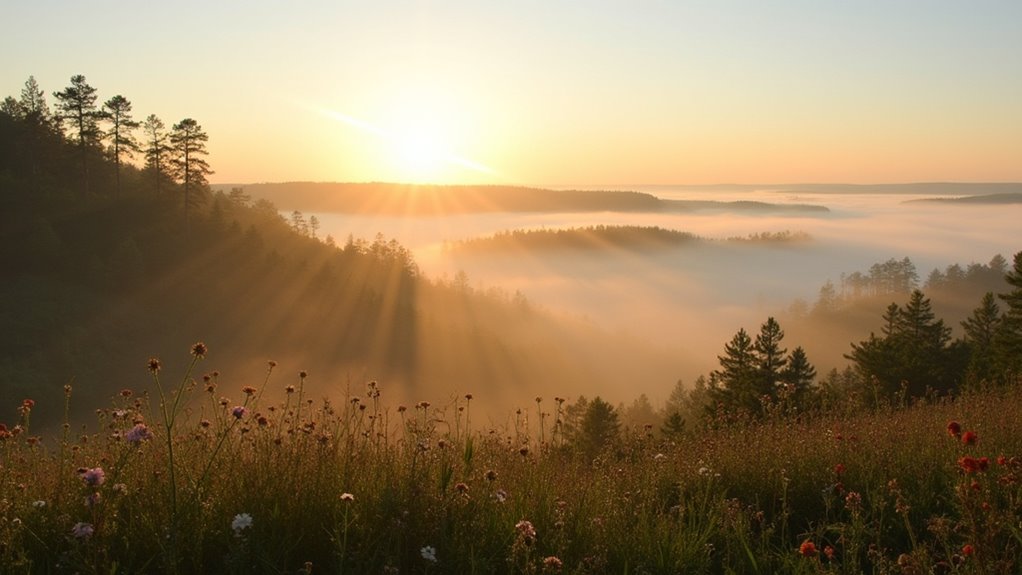
Florida’s topography presents a fascinating paradox despite its reputation for flatness. The state claims the lowest high point in America—Britton Hill at just 345 feet above sea level—yet offers surprising elevation diversity across its landscape.
You’ll find the highest areas concentrated in northern counties like Holmes, Walton, and Washington, where the sub-Piedmont formations create gentle rolling terrain. The peninsular spine features notable ridge systems like Lake Wales and Brooksville, both supporting distinctive ecosystems with endemic species. These areas are part of the Florida Highlands, which contain most of the state’s highest named points.
What Florida lacks in vertical challenge, it makes up for in accessibility. Every significant elevation point offers easy access, many with paved walkways and interpretive signage. Unlike California’s spider species which require careful observation, Florida’s geological features are openly visible to casual visitors. Highpointers particularly value Britton Hill as the easiest completion on their 50-state summit checklist.
Though Florida’s peaks won’t make your ears pop, they offer unique adventures in their own right. You’re walking on ancient seabeds when you climb these modest hills. Next time someone jokes about Florida being flat as a pancake, you’ll know better. The state’s subtle elevations tell stories of geological change that are just as fascinating as their towering cousins in neighboring states.